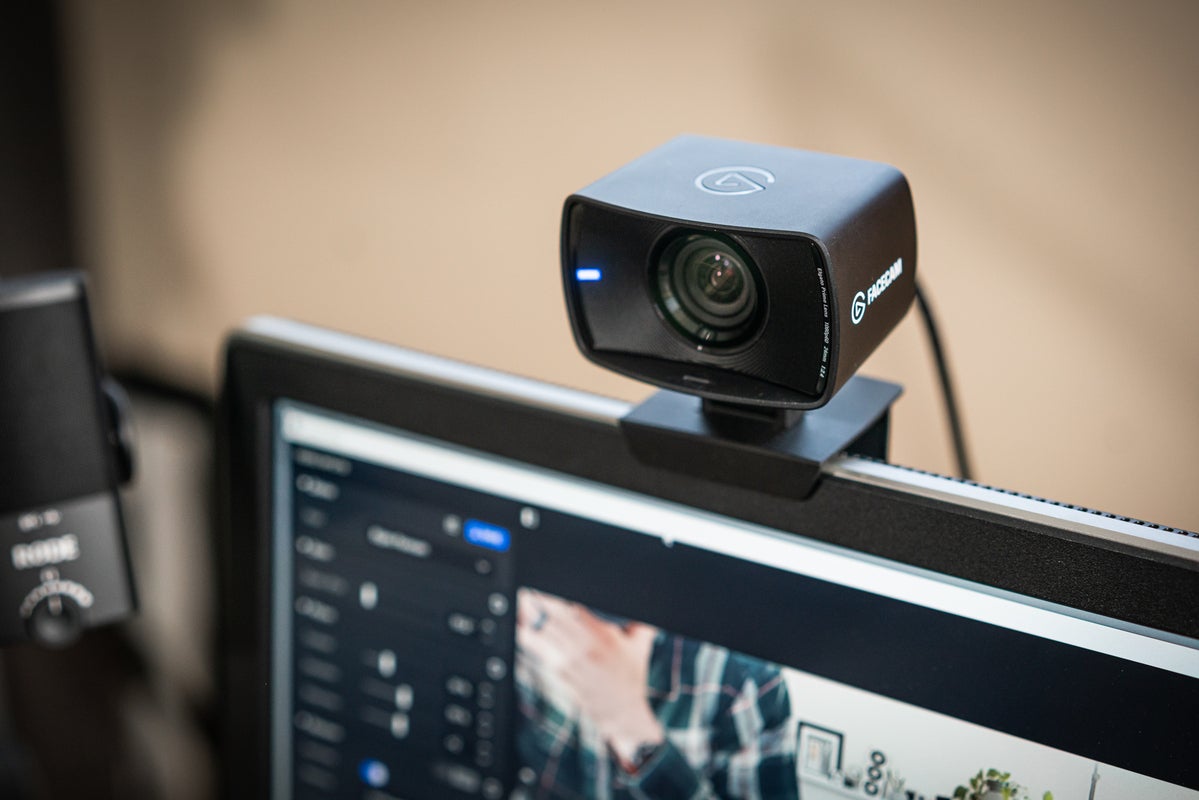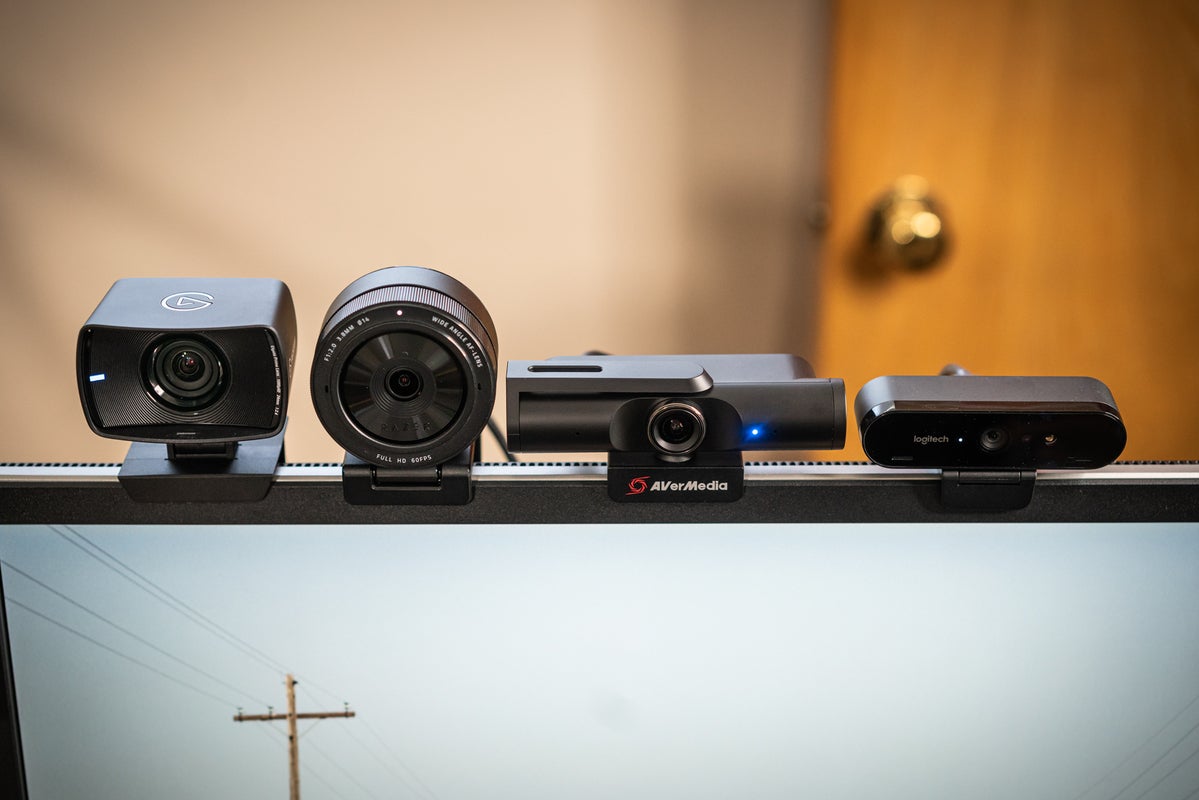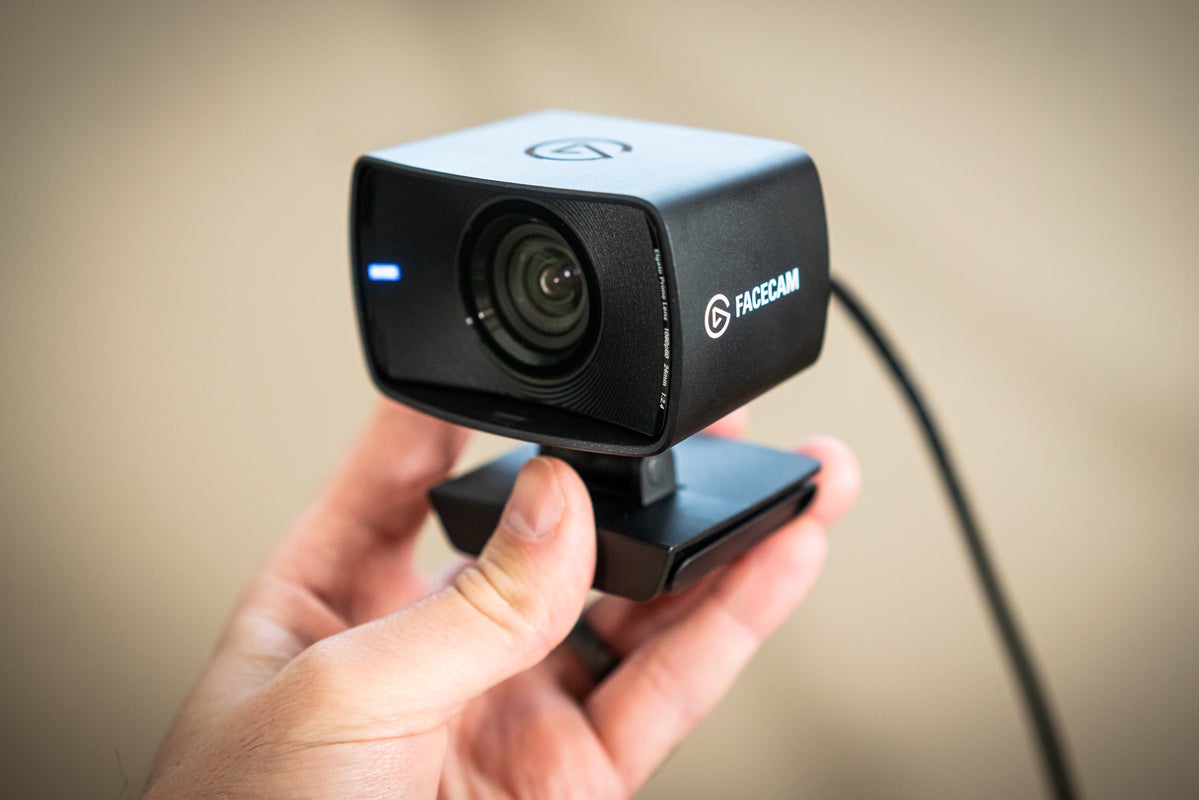 Credit: Adam Patrick Murray/IDG
Credit: Adam Patrick Murray/IDG
The FaceCam is a US$200 webcam from Elgato aimed at the gaming/streaming crowd—and it’s a unique first foray into the crowded camera business.
Why would anyone spend so much on a webcam? The streaming business is booming. You could easily drop thousands of dollars on a mirrorless camera setup for professional-looking stream, but this webcam aims to offer a (relatively) affordable alternative. Even a Zoom call could gain from the FaceCam’s capabilities.
 Adam Patrick Murray/IDG
Adam Patrick Murray/IDGElgato made its name by creating consumer-grade streaming devices with pro-level chops, aimed squarely at the gaming/streaming market, steadily expanding from capture devices to microphones and even green screens. The FaceCam is its first-ever standalone webcam, and on paper it features fantastic hardware and software chops. Some limitations arose in the course of our review, and the lack of HDR could be an automatic turnoff for some; however, overall this is a worthy addition to the midrange webcam market.
FaceCam hardware
There are no two ways around it—the FaceCam is huge. It would look downright silly teetering above a laptop screen. Streaming from a desktop with a large monitor, it doesn’t look that crazy, and it’s actually much smaller than a mirrorless camera. It has a more boxy, security-camera look compared to other webcams I have on hand. Because of an all-plastic construction it’s shockingly light at 96g, or 0.21 pounds, which gives it a cheap feeling in the hand despite the high-end hardware that’s packed inside.
 Adam Patrick Murray/IDG
Adam Patrick Murray/IDG
From left to right: Elgato FaceCam, Razer Kiyo Pro, AverMedia PW513, Logitech Brio
At the heart of the FaceCam is a Sony Starvis CMOS sensor, the same one that seems to be featured in the Razer Kiyo Pro and the Dell UltraSharp 4K. The FaceCam—like the Kiyo Pro—tops out at a 1080p, 60-fps signal, which is well below the 4K resolution in other cams in this price range. However, 1080p is actually preferred in many scenarios.
We’ll get into image performance soon, but one area where the FaceCam differs from other webcams is in its lens setup. It features a fixed-focus lens in order to combat focusing problems (like the Kiyo Pro continues to have) that appear as a distracting ‘breathing’ pattern when a camera’s trying to auto-focus. I’m completely fine with the lack of auto-focus in a webcam, especially because the FaceCam is designed for a distance of 12 to 47 inches from the camera—standard for a desktop setup.
 Adam Patrick Murray/IDG
Adam Patrick Murray/IDG
The FaceCam is still much smaller than this Canon EOS R with a zoom lens.
The FaceCam defaults to a 82-degree field of view (FOV), which roughly translates to 24mm on a full-frame camera, and is a nice focal length to aim for. Unfortunately (and unlike the Kiyo Pro) there is no option to get a wider FOV in situations where you might need it; Elgato chose to tune the camera for this length. Other 4K webcams have a wider FOV out of the box and let you crop in on the signal—which gives nice flexibility but can impact image quality.
The FaceCam connects to a PC via an included USB 3.0 Type-C (camera) to Type-A (PC) cable. A bundled plastic privacy cover clicks into place. A monitor mount attaches via the industry-standard 1/4-inch thread, so it can be mounted on a variety of options—including Elgato’s Multi Mount System and basic tripods found on Amazon.
 Adam Patrick Murray/IDG
Adam Patrick Murray/IDG
The FaceCam is surprisingly (alarmingly?) light.
The last notable hardware choice was to not include a microphone. While this might seem like a downside, most streamers are already using either a headset or stand-alone microphone. Both of those options offer much better quality than anything a webcam can offer, so I don’t think it’s a bad choice.
Camera Hub software
Great hardware can be held back by inferior software, and this is one spot where Elgato put in a lot of effort. The Camera Hub software available via Elgato’s website is a very simple tool for modifying basic settings like contrast, exposure, and white balance. It forgoes some of the fancy features available in the AverMedia CamEngine software, but it does what it does in a simple way that mimics DSLR/mirrorless camera controls.
 Adam Patrick Murray/IDG
Adam Patrick Murray/IDG
Elgato’s Camera Hub software is a delight to use for camera nerds like me.
Of course the FaceCam can also be controlled by other program like OBS or Zoom, thanks to its use of universal connection protocols. Using a USB 3.0 connection, programs can get a direct, uncompressed signal using the 8-bit 4:2:2 UYVY encoder. For those who aren’t video nerds like me, it means the signal the FaceCam feeds over USB 3.0 uses a lot of information to feed the best quality possible out of the camera into software. A USB 2.0 connection uses a compressed signal and is not recommended.
Even when the camera feed is being used by another program, launching the Camera Hub software to control camera settings presents no problems. That’s one major flaw of the Razer Kiyo Pro: The Razer Synapse software requires the attention of the camera in order to access the settings—which is a problem if you try to adjust the image mid-livestream. Being a video professional myself, I found the Camera Hub to be the easiest-to-use software I’ve encountered for a webcam; it makes sense to my camera-minded brain.
Camera performance - auto/daylight
For my formal webcam tests I captured four 1080p, 60-fps signals fed into a 4K OBS project—each taking up a corner of the frame—and ran through some lighting/setting tests. The webcams I used against the Elgato FaceCam were the Razer Kiyo Pro, AverMedia PW513, and Logitech Brio—all within the US$200 price range of the FaceCam, and most focusing on game streaming. I’ve organized them in the included YouTube videos from top left to bottom right: first the FaceCam, then the Kiyo Pro, PW513, and the Brio.
 Adam Patrick Murray/IDG
Adam Patrick Murray/IDG
In order to capture a similar camera angle, I had to stack the PW513 and Brio. All of them then fed into OBS.
The first scenario is using each camera in its default configuration (with everything updated to the latest firmware). In the default configurations, things like auto-white-balance and exposure are used to capture what the camera thinks is the correct image. All cameras also default to their widest FOV, which results in more things seen around the edges. I tried to put all the cameras as close together as possible to approximate the same angle. Also, the Kiyo Pro and Brio default to HDR-on.
In this example the first thing to notice is the white balance each camera presents, as it’s the most dramatic change. Which colors you like are definitely a matter of personal taste, but I prefer the Kiyo Pro’s representation of my skin tones and the reproduction of the color in the plants and on the cream walls. The FaceCam is rather reddish in comparison when it comes to my skin tone, and it affects the wall color as well.
When it comes to exposure and dynamic range, each camera handles things rather well. The FaceCam has a bit more grain in the image than I would expect in this light, and is pushing a higher exposure, but it has plenty of dynamic range to work with. The Kiyo Pro is a tad underexposed due to HDR (high-dynamic range) being enabled. The Brio has the flattest image overall, which isn’t the best out-of-box experience but should prove useful when tuning later.
When I bring up the shiny graphics card, the Brio is the quickest to adjust exposure, which can be rather jarring. The FaceCam adjusts its exposure a bit, but maintains a pretty even look throughout. The Kiyo Pro kicks its HDR into higher gear and is the only camera to preserve the highlights, even though the overall image is underexposed as a result.
Keep reading for more camera performance!
















